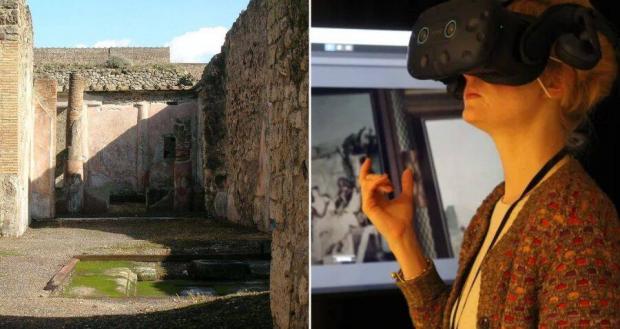
Breaking News
 2 Hours of Retro Sci-Fi Christmas Songs | Atomic-Age Christmas at a Snowy Ski Resort
2 Hours of Retro Sci-Fi Christmas Songs | Atomic-Age Christmas at a Snowy Ski Resort
 Alternative Ways to Buy Farmland
Alternative Ways to Buy Farmland
 LED lights are DEVASTATING our bodies, here's why | Redacted w Clayton Morris
LED lights are DEVASTATING our bodies, here's why | Redacted w Clayton Morris
Top Tech News
 Travel gadget promises to dry and iron your clothes – totally hands-free
Travel gadget promises to dry and iron your clothes – totally hands-free
 Perfect Aircrete, Kitchen Ingredients.
Perfect Aircrete, Kitchen Ingredients.
 Futuristic pixel-raising display lets you feel what's onscreen
Futuristic pixel-raising display lets you feel what's onscreen
 Cutting-Edge Facility Generates Pure Water and Hydrogen Fuel from Seawater for Mere Pennies
Cutting-Edge Facility Generates Pure Water and Hydrogen Fuel from Seawater for Mere Pennies
 This tiny dev board is packed with features for ambitious makers
This tiny dev board is packed with features for ambitious makers
 Scientists Discover Gel to Regrow Tooth Enamel
Scientists Discover Gel to Regrow Tooth Enamel
 Vitamin C and Dandelion Root Killing Cancer Cells -- as Former CDC Director Calls for COVID-19...
Vitamin C and Dandelion Root Killing Cancer Cells -- as Former CDC Director Calls for COVID-19...
 Galactic Brain: US firm plans space-based data centers, power grid to challenge China
Galactic Brain: US firm plans space-based data centers, power grid to challenge China
 A microbial cleanup for glyphosate just earned a patent. Here's why that matters
A microbial cleanup for glyphosate just earned a patent. Here's why that matters
 Japan Breaks Internet Speed Record with 5 Million Times Faster Data Transfer
Japan Breaks Internet Speed Record with 5 Million Times Faster Data Transfer
Step inside an ancient Pompeian home! Scientists use virtual reality to reconstruct...

Before the devastating eruption of Mount Vesuvius in 79 AD, Pompeii was a thriving city with a population of up to 20,000 people.
Now, scientists have delved deeper into one of Pompeii's most beautiful homes, the House of Greek Epigrams.
While the house has been damaged through centuries of neglect, weathering and volcanic eruptions, researchers from Lund University have been able to rebuild it, using virtual reality and eye-tracking technology.
'Eye-tracking technology and virtual reality do now provide unprecedented opportunities to assess the visual qualities of ancient spaces,' said Dr Giacomo Landeschi, co-author of the study.
The House of Greek Epigrams is an impressive home in northeast Pompeii that was once decorated with intricate frescoes.
'Work and daily activities were intermingled during the day,' said Danilo Marco Campanaro, co-author of the study.
'The house communicated to people about the personal power and status of the owner and his family.'
Using the videogame engine Unity, the researchers reconstructed a 3D model of the house, complete with restored paintings.
The team then used spatial analysis and eye-tracking technology to monitor volunteers as they explored the House of Greek Epigrams in virtual reality.
This allowed them to measure the visual attention of volunteers as they toured the house, tracking what caught their eyes.

 $100 SILVER CONFIRMED?
$100 SILVER CONFIRMED?

